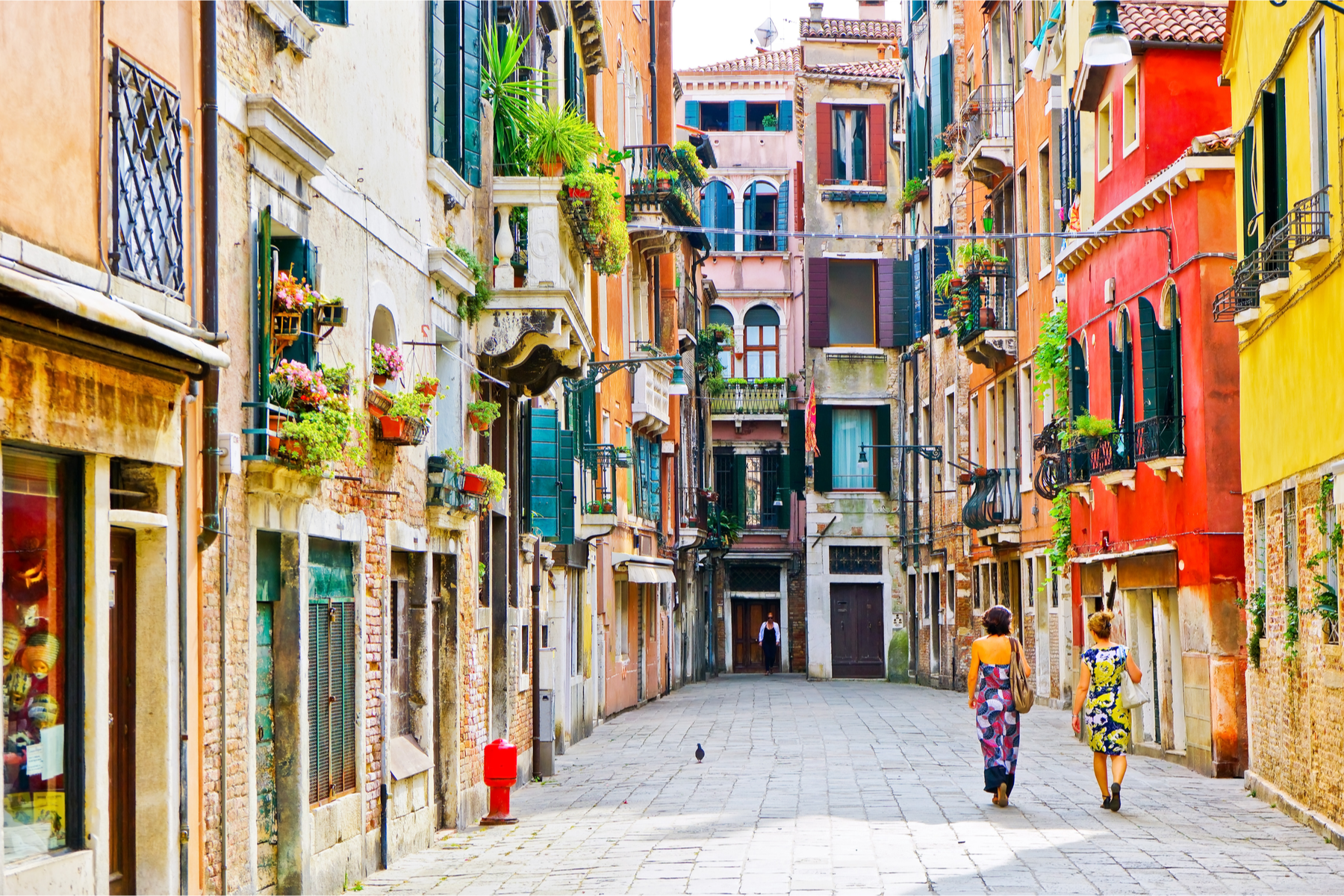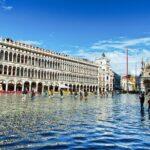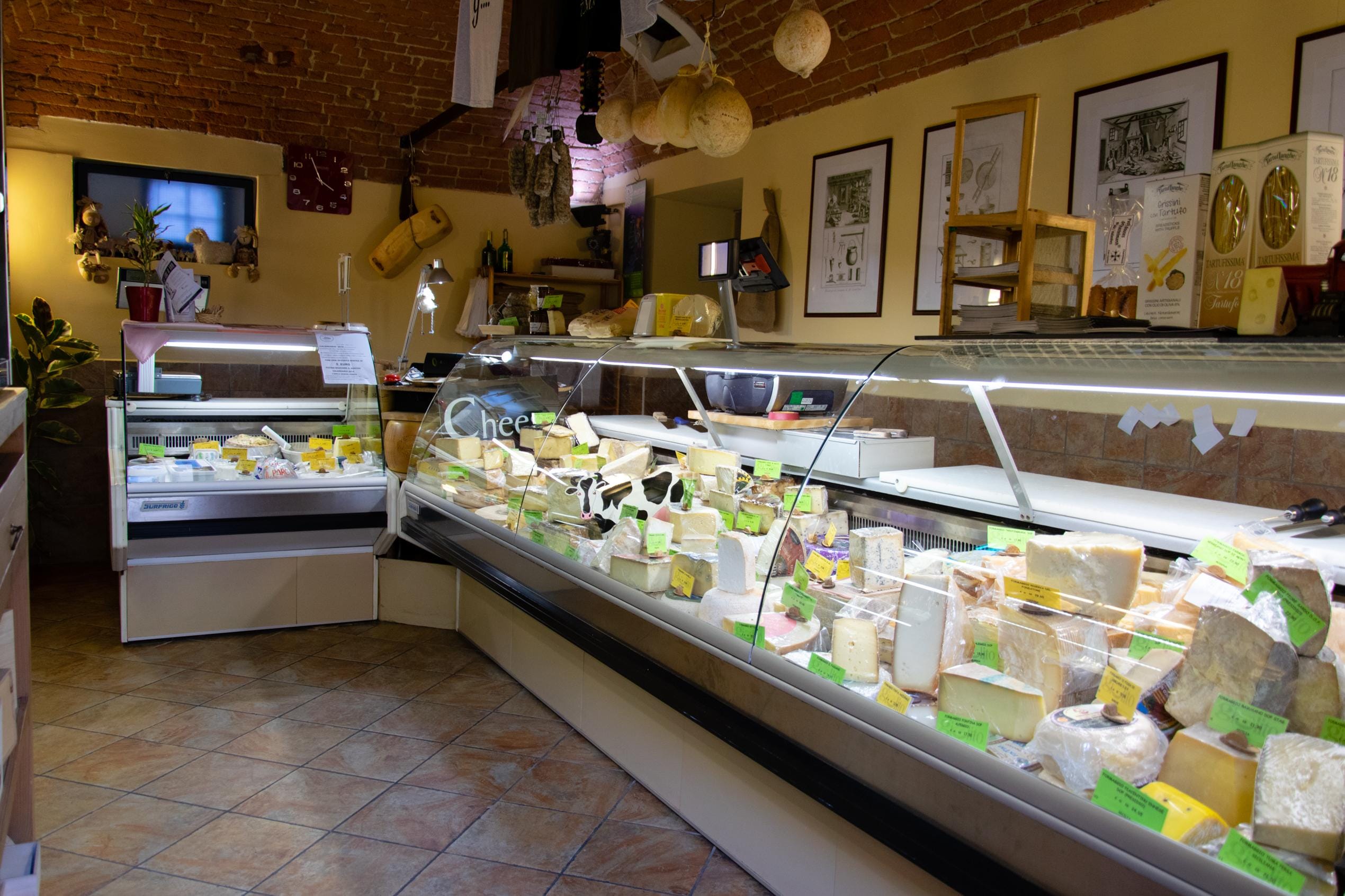Venice can feel overwhelming with so much to see. But with a little planning, you can practically guarantee a great stay in this one-of-a-kind city.
Venice is a small city that can seem big. With its multitude of fabulous sights, from churches to museums to watery views, you could (and should) spend days exploring its narrow streets and impossibly romantic waterways. That said, there are ways to make your Venice visit easier and more enjoyable, whether it’s your first visit or your 50th. Try these 10 tips to get yourself ready for a Venice trip to remember.
Wear Comfy Walking Shoes
Because no cars are allowed in Venice, you’ll either be walking or taking boats to get around everywhere—and it can often be more time-efficient to walk rather than to wait for a vaporetto (water bus). Streets are often cobbled and distances longer than you expect (especially when you’re in search of the hot new restaurant in that off-the-beaten-path neighborhood), so do yourself a favor and wear a pair of comfortable shoes. You won’t regret it.
Travel as Light as Possible
In the same vein, aim to bring the most manageable suitcase that you can. Venice has more than 400 bridges, many with only stairs and no ramps. Unless you’re staying right on the Grand Canal, or on a neighboring island with a door-to-door boat shuttle, you’ll more than likely be carrying your bag up and down stairs and through narrow streets. Some of the charming hotels in old palazzi don’t have elevators either, so the lighter your luggage the less you’ll struggle.
Recommended Fodor’s Video
Splurge on a Water Taxi to and From the Airport
Though the public Alilaguna ferry shuttles passengers back and forth from Marco Polo Airport to various stops in Venice once or twice each hour, it’s often crowded and can take about 1.5 hours to get into the city. A much more comfortable, relaxing, and glamorous way to begin and end your trip is to take a private water taxi. Sure, it’s not cheap—the average cost is about €120 one way—but it’s quick, fun, and makes your trip all the more memorable. If you’re traveling with a group or can pull a few people together, taxis can usually carry up to 10 people, so the cost per person ends up being quite reasonable.
Stay in a Room With a Canal View
Venice is all about its water views, and there’s nothing more romantic than waking in the morning to the jaw-dropping scenery of a canal or the lagoon. Yes, a hotel with canal views will cost more than staying away from the water, or choosing a room with a city view or no view, but it will be something you’ll always remember. To save some money, choose a hotel not on the Grand Canal itself but on a side canal, where the atmosphere will be quieter but the views just as charming.
Explore the Sestieri Outside of San Marco
Most visitors to Venice spend the majority of their time in San Marco. While you’ll also want to explore the renowned sights there, Venice does have five other sestieri (neighborhoods), and each has attractions that warrant a visit. Get away from the crowds by wandering around Cannaregio, San Polo, Santa Croce, Castello, and/or Dorsoduro, and exploring the many museums, churches, and palazzi they have to offer. It’s also generally true that the best food in Venice isn’t found in touristy San Marco, so you’ll want to make your way around the other neighborhoods to find more satisfying cuisine.
Look for Locally-Made Products
Venice is awash in mass-produced trinkets aimed squarely at tourists. But there are also beguiling boutiques offering such delights as glass from Murano, lace from Burano, artisan masks, one-of-a-kind artwork, exquisite fabrics, and handcrafted leather goods. Buying something unique and made in Venice rather than generic and disposable not only puts money back into the pockets of locals but gives you items you can cherish for years to come.
Hang out in a Campo
Venice’s campi, or squares, are at the heart of every neighborhood. They provide a place for locals to catch up, shop, run their errands, and have a drink and a bite to eat—and are also a wonderful way for visitors to get a taste of local life. Some campi to seek out while in Venice include Campo San Giacomo dall’Orio in Santa Croce, where you’ll find a 9th-century church; Campo San Polo in San Polo, the city’s second-biggest square after San Marco and home to a summer outdoor cinema; Campo Santa Margherita in Dorsoduro, with restaurants and bars frequented by lots of students; and Campo Ghetto Nuovo in Cannaregio, part of Venice’s Jewish Ghetto.
Buy a City Pass to Save Money
If you’ll be spending more than a day or two in Venice—and you really should—consider getting a Venezia Unica City Pass, which includes entry to many (though not all) Venice museums and churches. Most importantly, it lets you skip the lines, especially useful if you’re there during the high season. You can also add public transportation coverage into the pass—very useful if you’ll be taking a lot of water buses, since buying separate tickets can quickly add up.
Visit During a Festival
Venice is especially known for three big festivals: Carnevale, the Biennale, and the Film Festival. Venice Carnevale, filled with revelers in costumes and masks attending parties all over town, runs for about two weeks, finishing up 40 days before Easter (so the dates vary slightly from year to year). The Venice Biennale, which goes from mid-May to late November, showcases contemporary art in odd-numbered years and architecture in even-numbered years. The Venice Film Festival is a celebrity-laden event held yearly from late August to early September in the Lido. If you’re able to visit during one (or more) of these events, your Venice visit is sure to be even more fun.
Don’t Pass up the Tiramisu (And Other Local Dishes)
Sure, it’s possible to get pizza and (gasp) hamburgers in Venice—but why not focus on the foods that are actually from the region? Some of the best-known dishes include, sarde in saor, fried sardines with vinegar and onions; baccalà mantecato, creamed salt cod served on bread or polenta; risotto al nero di seppia, made with black cuttlefish ink; and bigoli in salsa, spaghetti-like pasta with onions and anchovies. Seasonal seafood, including crab and razor clams, also shouldn’t be missed. Best of all, tiramisu, ladyfingers soaked in espresso with mascarpone cheese, cocoa, and sometimes liquor, hails from the Veneto region, so it only makes sense to sample as much as you can.






